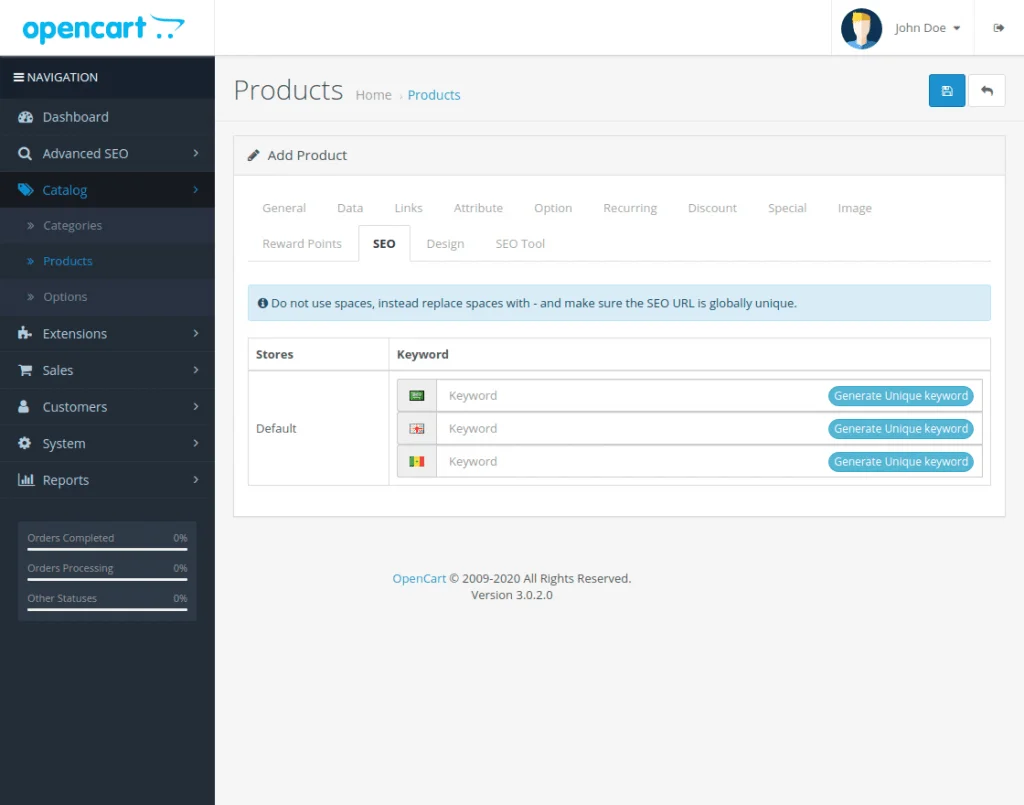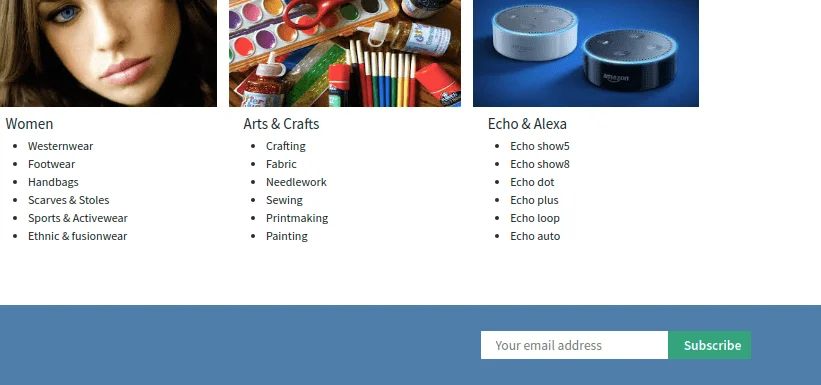Your business may have an online store, but are you keeping up with the digital demand? Here will discuss “Why Now Is the Time to Invest in eCommerce SEO”.
The current global situation is changing the way we shop. Online shopping provides consumers with convenience, ease, and ability to get almost any product or service to their doorstep with a few clicks on their computer or taps on their smart gadget.
And as many countries are encouraging their citizens to stay indoors, online shopping has become one of the main options of purchasing necessities for those who want to avoid going outside.
Prior to the global situation, online shopping was already on the rise. Around 1.8 billion people worldwide make online purchases.
Around half of the consumers are now choosing to shop online rather than go to physical stores. And because of the current situation, it’s suggested that online shopping is likely to soar in the near future.
In 2018, only 22% of the United States population bought their groceries online; as of March 2020, it nearly doubled up to 42%.

It’s not enough to simply build your online store and call it a day because there are a lot of factors that can determine its success (or failure). And this is why it’s necessary to invest in SEO services for your eCommerce platform.
Why SEO for eCommerce?
Search engine optimization (SEO) puts your business in the spotlight of search results every time consumer searches for a product or service your business can provide.
If done right, search engines like Google put you at the top of search results because its algorithm thinks your business is what the user is looking for.
But done wrong and search engines will put you below your competitors or even on the next page of search results, making you invisible to potential customers.
SEO has the highest ROI of any eCommerce marketing campaign strategies. While many businesses use this for their websites, surprisingly not a lot of them use SEO on their online stores.
Instead, most businesses opt to use social media and paid ads to get the word out. And while these strategies can be effective, there’s a downside to this.

Social media requires your marketing team to be constantly posting and interacting with customers; once they stop posting, their relevance, and the attention they’re getting goes elsewhere.
And paid ads only stay up as long as your business can afford to pay for it.
Some bigger businesses can afford to keep ads up indefinitely, but for small businesses, it may be impractical and you could end up spending more money on paid ads than you earn from these sales.
Because a lot of online stores aren’t optimized for SEO, stores that do have a huge advantage to appear for relevant keywords.
And unlike paid ads or social media, after your SEO strategy is implemented, your position doesn’t drastically drop once you stop paying for SEO.
So, how do we convince an algorithm that your business is more relevant to a keyword than your other competitors? There are different strategies for that.
eCommerce SEO Strategies
SEO for eCommerce involves several tactics and strategies. Take note that not all of these strategies may apply to your online store, depending on your location, scope, product or service provided, and more.
Keyword Research
Find out what potential customers are searching for. Once you find out these keywords, you can try to organically place those keywords on your website so that Google’s algorithm thinks you’re providing a product for that specific keyword.

For example, let’s say you’re an electronics store and one of your products is wireless earphones. The obvious keyword to rank for would be “wireless earphones,” but it can be difficult to rank for two reasons.
First, you’d be competing with wireless earphone review blogs, wireless earphone manufacturers, and other online stores.
Second, there’s no guarantee that consumers searching for “wireless earphones” have the intention to buy. They could be searching for review blogs, pictures of what they look like, or considering whether or not to buy one.
But through keyword research, you could find out that consumers are searching for “BrandX 500ABC wireless headphones,” a product you happen to have. Or you find that they’re searching the keyword “durable BrandX wireless earbuds.”
So now you know that you have to add these keywords onto your website, which can affect Google’s algorithm and put your store at the top results when a potential customer searches for it.
Improving User Experience
The internet has made everything accessible with just a few taps of a smart gadget. As a result, people expect to get what they want within seconds.
This is why, for digital marketers, we know that we only have seconds to pull them in and only a few taps to get them to make a purchase.
In 2016, Google found that over half of users browsing websites on their phone will leave the website if it doesn’t load in three seconds. And websites that loaded within the first five seconds had 70% longer sessions and 35% lower bounce rates.
Google’s algorithm takes bounce rates into consideration when showing search results.
If a website ranks for a certain keyword but Google sees that the bounce rates are high, the algorithm takes it as an indication that people are leaving because they’re not seeing what they want to see.

It doesn’t matter if the reason users leave is that the website takes a long time to load or users really just didn’t like the website.
If your online store takes a long time to load, more users are likely to leave in the first few seconds. This results in a high bounce rate and Google’s algorithm dropping your website from the top rankings.
Another UX experience to consider is the number of clicks or taps it takes for a person to get from the main page of your online store to the checkout.
The more effort it takes for a user to find the products they want, add them to their cart, and finish their shopping, the less likely it is for them to finish their shopping in favor of a competitor that can provide the same products more conveniently.
On-Page and Technical SEO
After doing keyword research, this is the part where your online store is optimized through the meta tags and on-page content.
This includes both your homepage and the pages for every category and product. Once your online store has been optimized, technical SEO makes sure your webpages are properly organized to help ensure search engines can crawl your website more efficiently.
Local SEO
This SEO only applies when you have a brick and mortar store or are limiting your product shipping to a certain business (e.g. you’re a bakery specializing in cakes that can’t survive a long shipping trip).
Because your target customers are in a specific location, your SEO can’t be generalized to attract people everywhere.
So, by using Local SEO, you can specify which city, region, or state you’re limiting your business to. If done right, Google will understand this and highlight your business to targeted users searching for your business within your specified location.
Why Invest in SEO Now?
Investing in SEO for your online store can be a big advantage for your business, regardless if your business is a corporation or a small one-person setup at home.
Stay Ahead of the Curve
Not a lot of online businesses use SEO in their online store. This gives you the advantage of ranking for low-hanging keywords without any competition.
Given the current global situation, eCommerce is bound to expand faster than it did prior to 2020.
When online stores finally realize the importance of SEO for their online store, it will become tougher to rank for certain keywords at the same time or after your competition has already ranked for it.

By investing now, you get a huge head start to build your SEO and optimize it before your competitors do.
More Potential Customers, But More Competitors
Opening an online business means you have a wider range of potential customers compared to businesses that exclusively operate mortar and brick stores.
With a physical store, you might have been limited to potential customers within your area.
But for online stores, you can reach out to other potential customers in different cities and even countries if they’re unable to find local alternatives.
Unfortunately, the opportunities to expand on the internet can be a double-edged sword. Although you have more customers, you also have more competitors.
If you don’t have an online presence that makes you visible to potential customers in your area, they have the option of buying from competitors. Even if they’re farther or sell the same products at a price higher than what you’re selling it for.
With SEO, you can establish your online store’s presence and have a better competitive edge.
Tap Potential Customers Outside Your Reach
A common strategy used by online businesses to get users to their online store is through content marketing. Tactics like newsletters and social media posts get new customers. And those loyal to their brand to return and make a purchase.
This can be effective, but by limiting your digital marketing strategy to these two, you’re not maximizing all your opportunities and are limiting your marketing to those within your circles.
By using SEO, you could be tapping onto potential customers who don’t receive your newsletter or follow your business on social media.

They may not know about your business, but when they do search for products. And find your page at the top results, they end up buying from your online store.
With online stores set new norms, maximizing your online store’s visibility can mean a lot in terms of increased sales.
Aside from different strategies, SEO is a good way to put your store in spotlight especially before your competition does.
Also, for any suggestions of query contact us at bagisto.uvdesk.com



Be the first to comment.